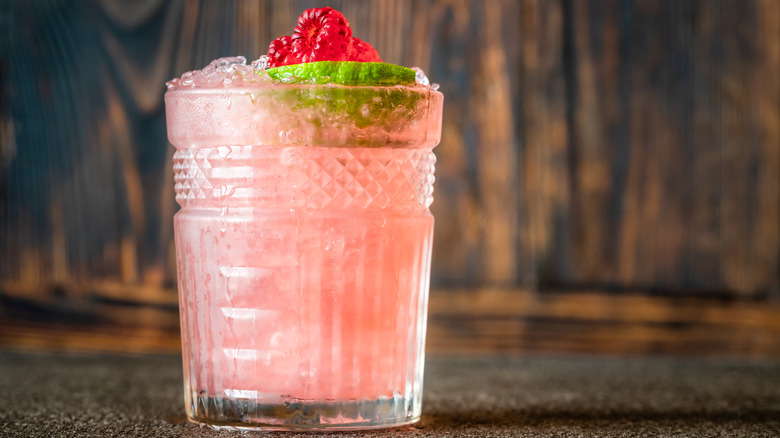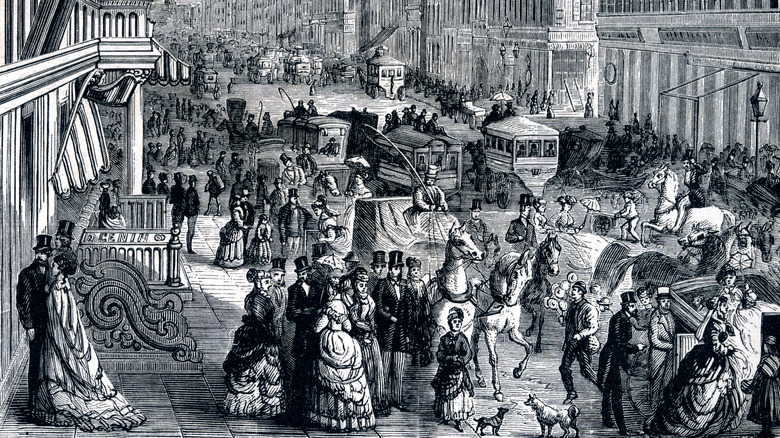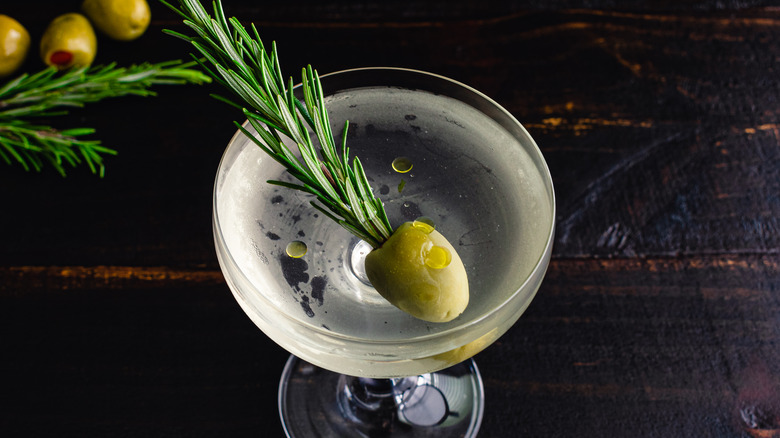What Are Knickerbocker Cocktails And Where Did They Originate?
What exactly are knickerbockers? Sure, it is a word that is extremely fun to say, but beyond that, the term has a slew of different meanings. From a purely literal point of view, there are two direct dictionary definitions. Uncapitalized, knickerbocker refers to the knickers, or short pants tucked into boots, that were once popular fashion. Capitalized, Knickerbockers refers to anyone descended from the Dutch colonizers of New York. More broadly, however, Knickerbockers are simply New Yorkers writ large (via Merriam-Webster).
The word has a long and storied history with New York City. The "Knicks" of the NBA team The New York Knicks, is short for Knickerbockers. There's the famous Knickerbocker Glory sundae, a combination of strawberries, marshmallows, and vanilla ice cream served in a tall glass, per Great British Food Awards. And then, of course, there is the famed Knickerbocker Hotel, a luxury accommodation located at the heart of New York City in Times Square.
New York has no shortage of knickerbockers in the same way knickerbocker has no shortage of meanings. Which is why it's so difficult to pin down exactly what a Knickerbocker cocktail actually is. Contrary to popular belief, the cocktail was not invented in or named for the eponymous hotel, per Difford's Guide. This collection of boozy beverages have been alcoholic staples of Manhattan since the mid 19th century, decades before the hotel was even built.
A New York fable
According to Esquire Magazine, the population of 19th century New York City was split into two distinct classifications: Yankees and Knickerbockers. The Yankees, of Puritan-blooded New England stock, were reserved, shrewd businesspersons who did not like rowdiness of any kind. Conversely, the Knickerbockers, who were originally of Dutch and Huguenot descent, loved drinking, horse racing, feasting, and were themselves excellent practitioners of business. Thus, Knickerbockers became the moniker for any rowdy 19th century New Yorker, and the name stuck. We can thank the Knickerbockers for New York's reputation for outspoken personalities.
So, it can be postulated that the Knickerbocker cocktail was so named as a tribute to this group of rebel-rousers. Unfortunately, this is mere conjecture for there remains no definitive answer to who invented the Knickerbocker cocktail. The first recorded recipe can be found in the 1862 publication "The Bartender's Guide" by Jerry Thomas. Listed are the ingredients for what has become known as a Classic Knickerbocker. The drink contains the juice from half a lime or lemon, raspberry syrup, Santa Cruz rum, and orange Curacao. It's shaken over ice and served cold with a garnish of seasonal berries. This is the base upon which all other variations of this cocktail are built (via Difford's Guide).
Knickerbocker variations
One of the things that defines a Knickerbocker cocktail is its rum. The Jerry Thomas recipe calls for Santa Cruz, which is an amber style rum. Amber, or gold rum, is aged in wood casks which give the alcohol its indicative hue and imparts a decent amount of sweetness, per Illinois Liquor Marts. The rum is intended to blend evenly with the raspberry syrup, something an overpowering as a dark rum wouldn't be able to do, according to The Spruce Eats. For the raspberry syrup, you could easily make some at home, or use one of a number of reputable brands. The Knickerbocker is traditionally served cold, making it perfect for summer.
Ordering a Knickerbocker at a bar is going to get you the classic recipe previously mentioned. However, Difford's Guide reveals there are three classifications of Knickerbocker cocktails currently being served up throughout the nation. The first two are plays on the original recipe. The Knickerbocker Classic is served over ice, while the other, the Knickerbocker Special, is served without. Then there is the Knickerbocker Martini. The recipe for this drink bears absolutely no resemblance to the rum/raspberry combo. The Knicker-Bocker martini — the hyphen was introduced with the recipe in the 1930s — is a version of a gin martini. It is equal parts gin, dry Vermouth, and sweet Vermouth stirred over ice and served in the requisite glass. Regardless of variety, a Knickerbocker cocktail is pure New York in a glass.


